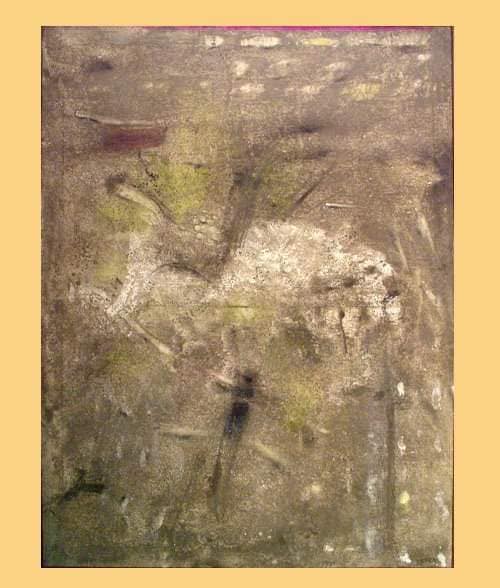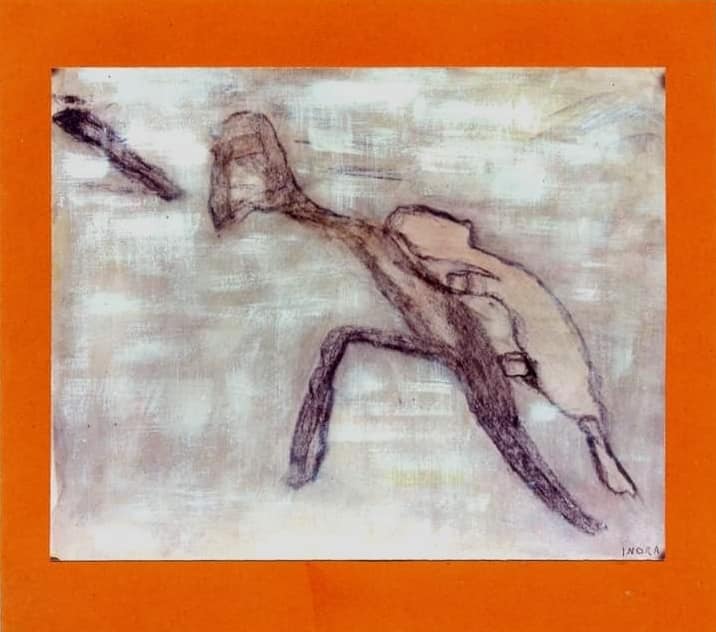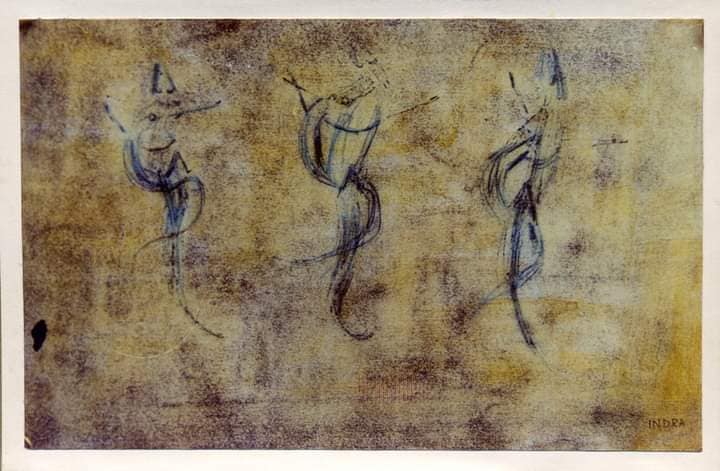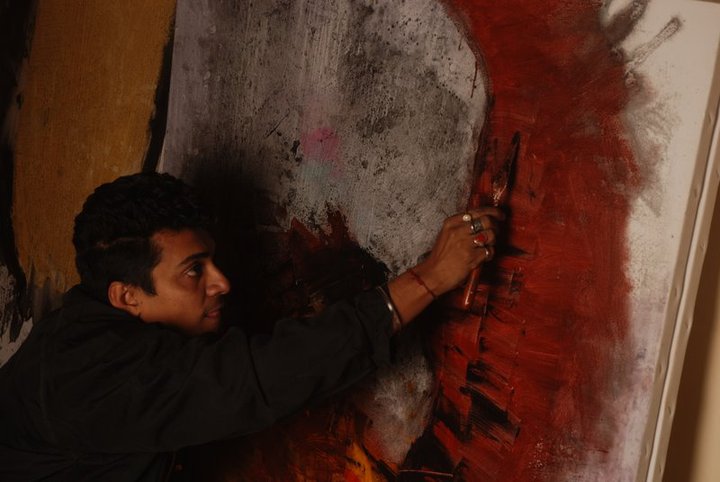Indranil Banerjee
About the Artist Indranil Banerjee
As an artist, Indranil Banerjee approaches creative work as both an emotional release and an intellectual exploration. His paintings invite viewers into a space where chaos meets order and abstraction gently touches recognition. For him, art is not merely visual—it is a language of the inner self. The world around him becomes his constant muse: the shifting colors of nature, the silent tensions in human moods, and the ever-changing landscapes of everyday life. These impressions settle into his subconscious and re-emerge on canvas as textured forms, layered emotions, and dynamic compositions. Through this process, his work becomes a bridge between lived experience and artistic expression, encouraging viewers to feel, reflect, and interpret in their own way.
To me, art is a powerful medium for expressing the myriad feelings and experiences that life presents. Each painting is an opportunity to share a piece of my soul, transforming the intangible into something beautiful and meaningful. As I continue to create, I remain committed to capturing the essence of the world around me, one brushstroke at a time.
My Heart’s Rebellion
I’m, and I’m done with the quiet cage of the canvas, that dead space of paint and rules. Art isn’t a neat plan or a soft sigh, it’s a wild fire, a roar from deep inside that can’t be held back. I’m sick of paintings that just sit there, waiting to be studied or locked away in silence. I’m here to break that.
My art, is a rebellion, a loud, messy, beautiful chaos. Life isn’t a still picture; it’s a storm, always moving, always alive. I don’t just make art, I let that storm pour through me. I’m not building pretty things; I’m catching the raw energy of the world, the pulse of life that grows, shifts, and fights.
My paintings aren’t about shapes or objects, they’re about moments, about the fire inside everything. My work isn’t just a style; it’s how I see the world: a wave that crashes through walls and keeps going. My canvases hold the marks of that wave, proof that I won’t be tamed. Painting is my fight. It’s not a careful brushstroke, it’s an explosion of my heart, my body, my soul, all smashing into the paint. The canvas isn’t just a surface; it’s where I battle. Its edges don’t stop me, they can’t.
My art spills out, takes over, refuses to stay small. I love the mess of paint, its thickness, its fight, its truth. It’s not about looking perfect; it’s about feeling alive.What’s left on the canvas isn’t the end, it’s the scar of a storm, the proof of something real.
My art isn’t here to be quiet or comforting. It’s here to shake you, to wake you up. I’m tired of cold, brainy art that feels like a lecture. My canvas is a fight club, where chaos and creation collide. I’m a storyteller with no words, a chaser of energy, a voice for the wild inside. My art isn’t something to just hang on a wall—it’s the beat of a moment that’ll never come again. True art isn’t about what it looks like; it’s about the fire that makes it. Come feel that fire and step into my world of chaos and truth.
~ Indranil Banerjee Artist
Recent Works: 2026

Works: 2023-2025

MAY DAY
Oil acrylic
40″ X 40″
May Day, a painting born from tragedy, captures the heart-wrenching final five seconds of AI-171’s pilot crying, “No power, no thrust,” before the plane plummeted after takeoff, claiming over 270 lives. The artwork pierces the soul, a stark reminder that life hangs by a fragile thread, here one moment, gone the next, unpredictable and merciless.
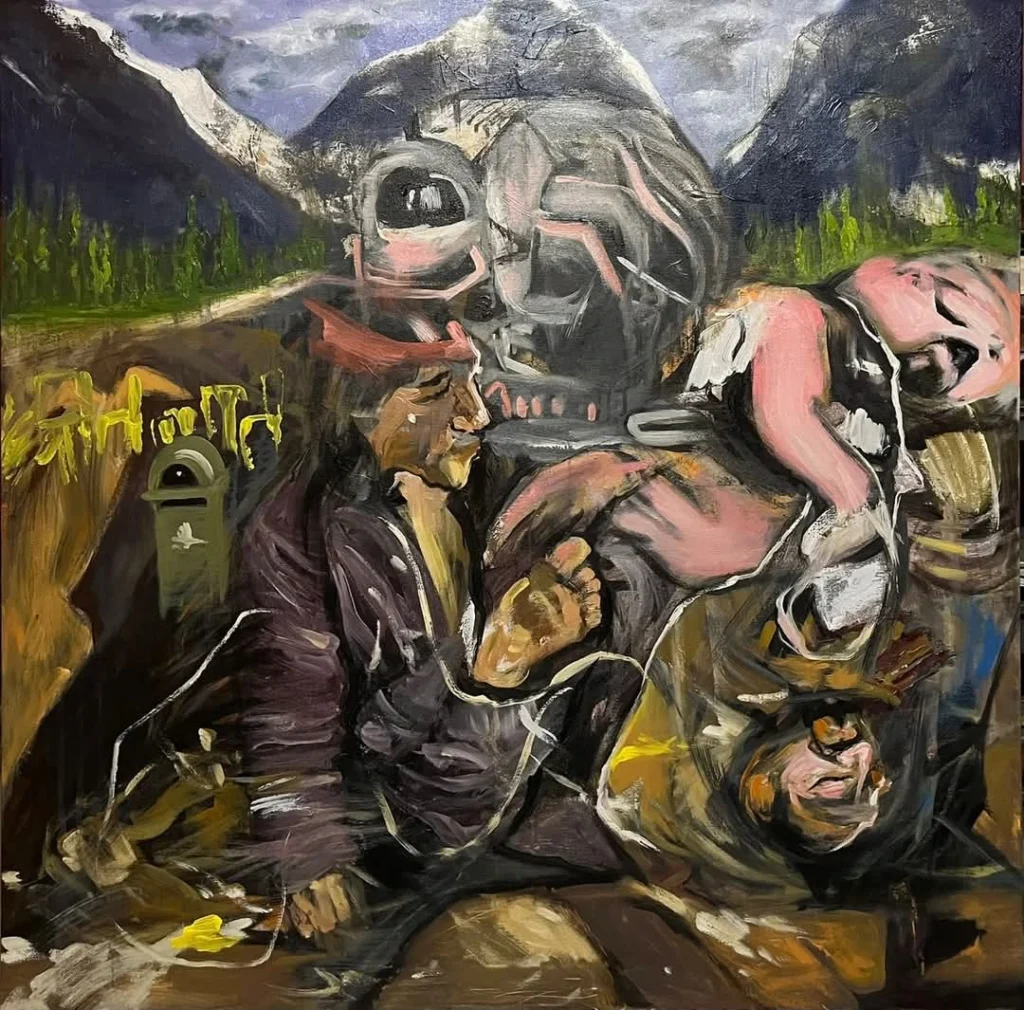
When Heaven Turned Into Hell
Oil painting – Acrylic scribbling on Canvas
I’ve never been to the valley or the city people call paradise on Earth. I only knew it through stories and pictures, peaceful, beautiful, almost like a dream. But when I heard what actually happened there , the violence, the pain, the killing of innocent people, I was deeply shaken.
It broke something inside me.
This painting came from that place of shock and sorrow. I didn’t plan it. It just poured out of me. Every color, every line, every stroke — it’s all part of the emotion I was feeling. I see chaos, pain, and confusion in it, because that’s exactly what I felt.
The raw expressions, they’re not just images, they’re how I processed what happened. I was heartbroken, and I used my brush as a way to cope.
I still feel heavy thinking about it.
This painting is my way of saying — I may not have been there, but I saw, I felt, and I care.
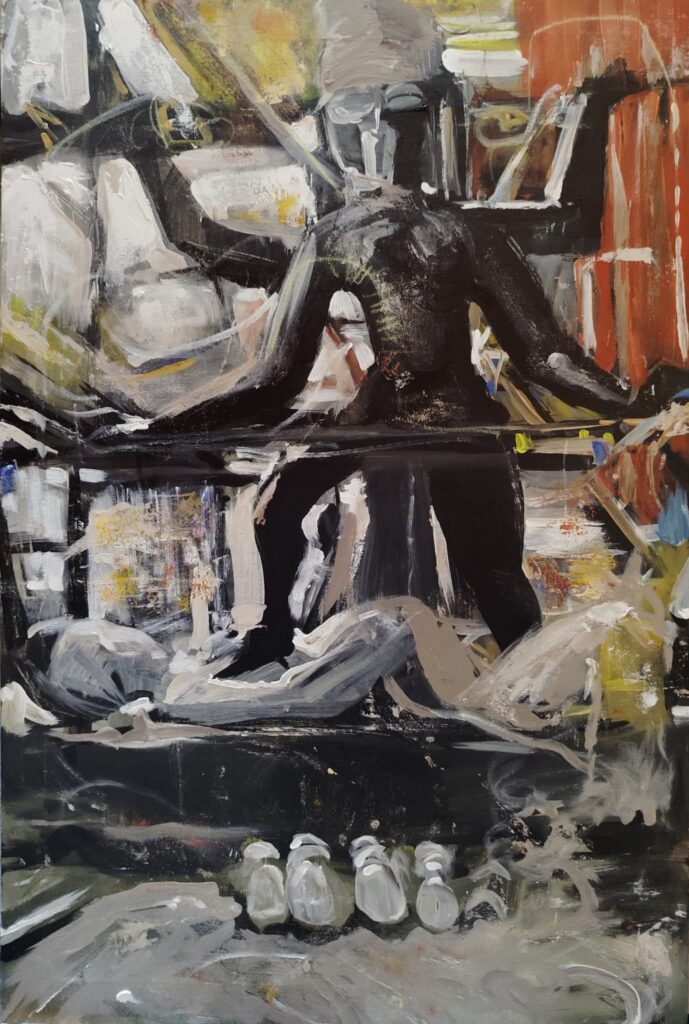
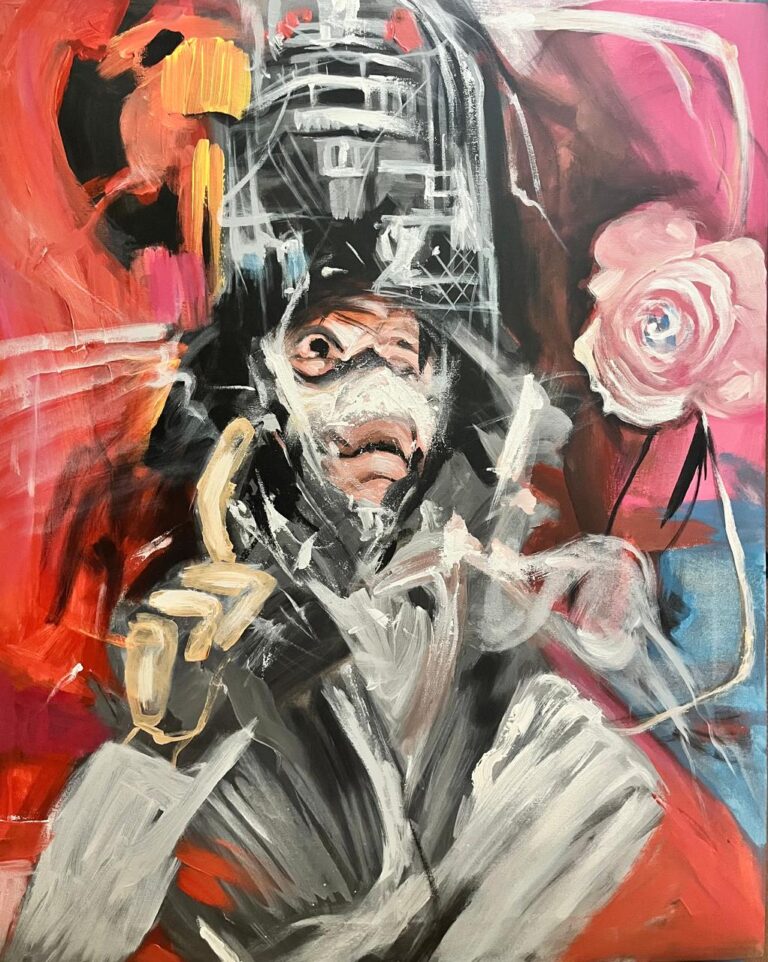
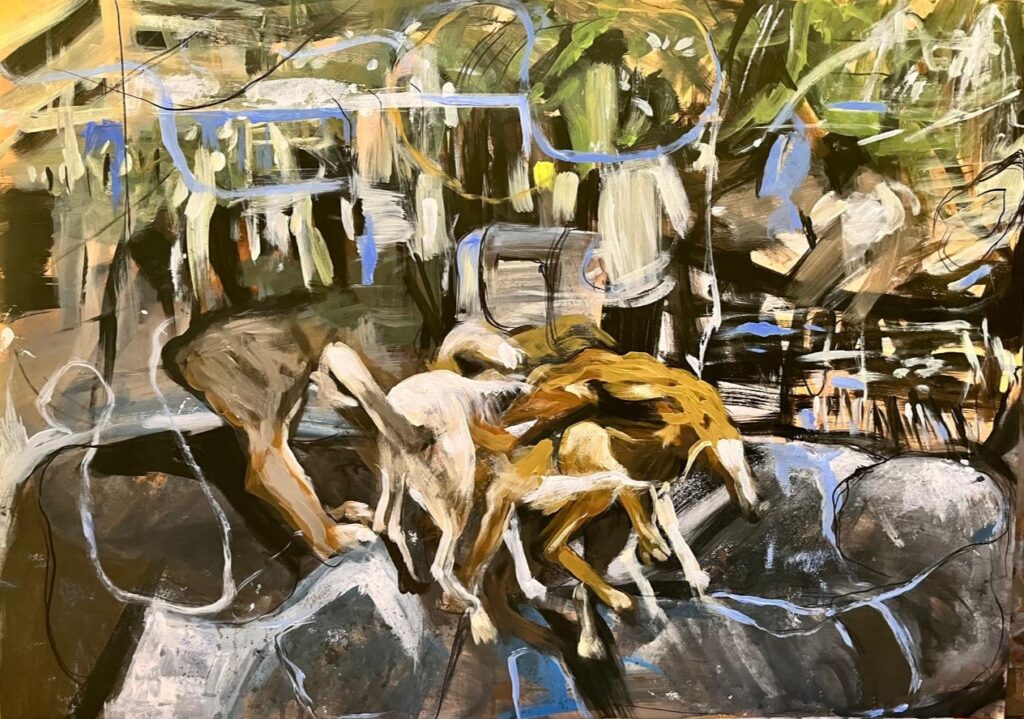
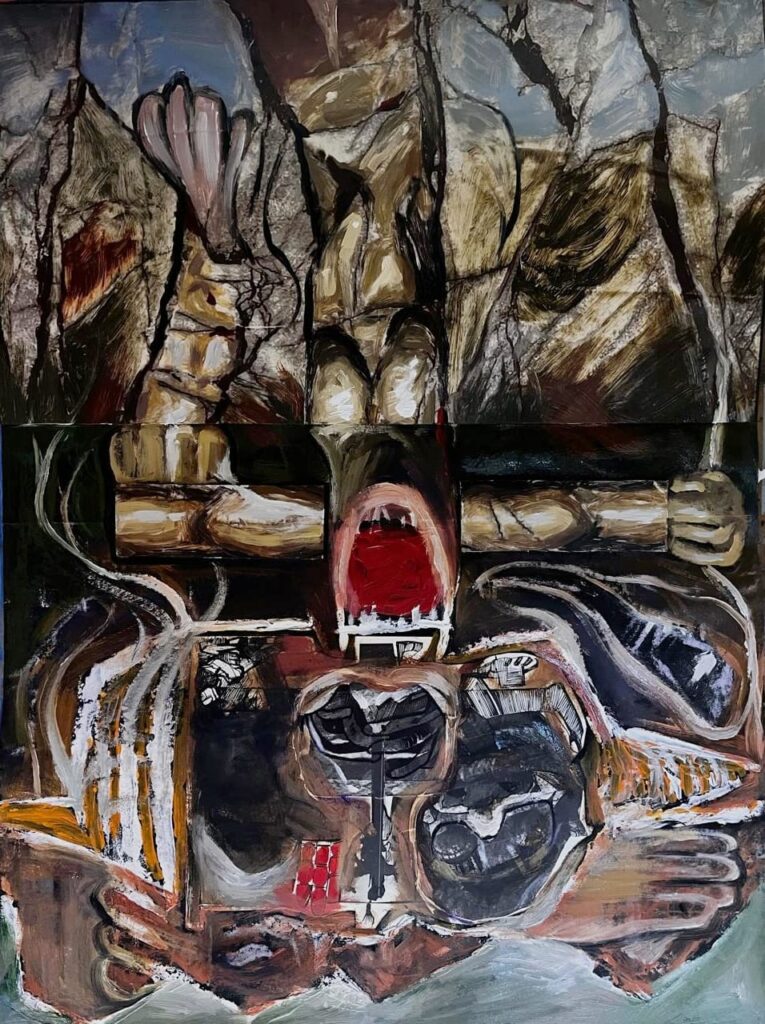
I painted this in a moment of raw emotion, where chaos and agony intertwined on the canvas. The distorted forms, the gaping scream, the fractured elements.
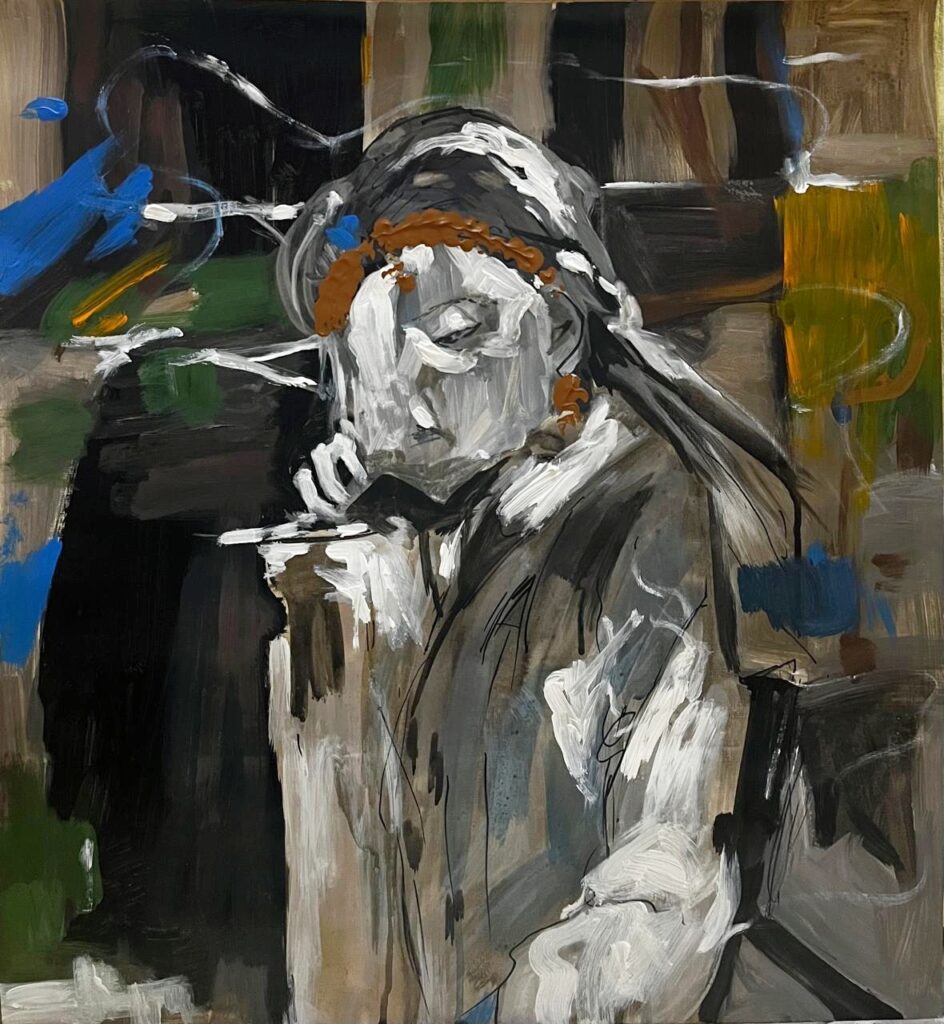

This painting pays homage to Nandalal Bose, a master of modern Indian art, through a deeply expressive way. This piece is a heartfelt offering—a visceral expression of reverence for one of India’s most iconic artistic pioneers.
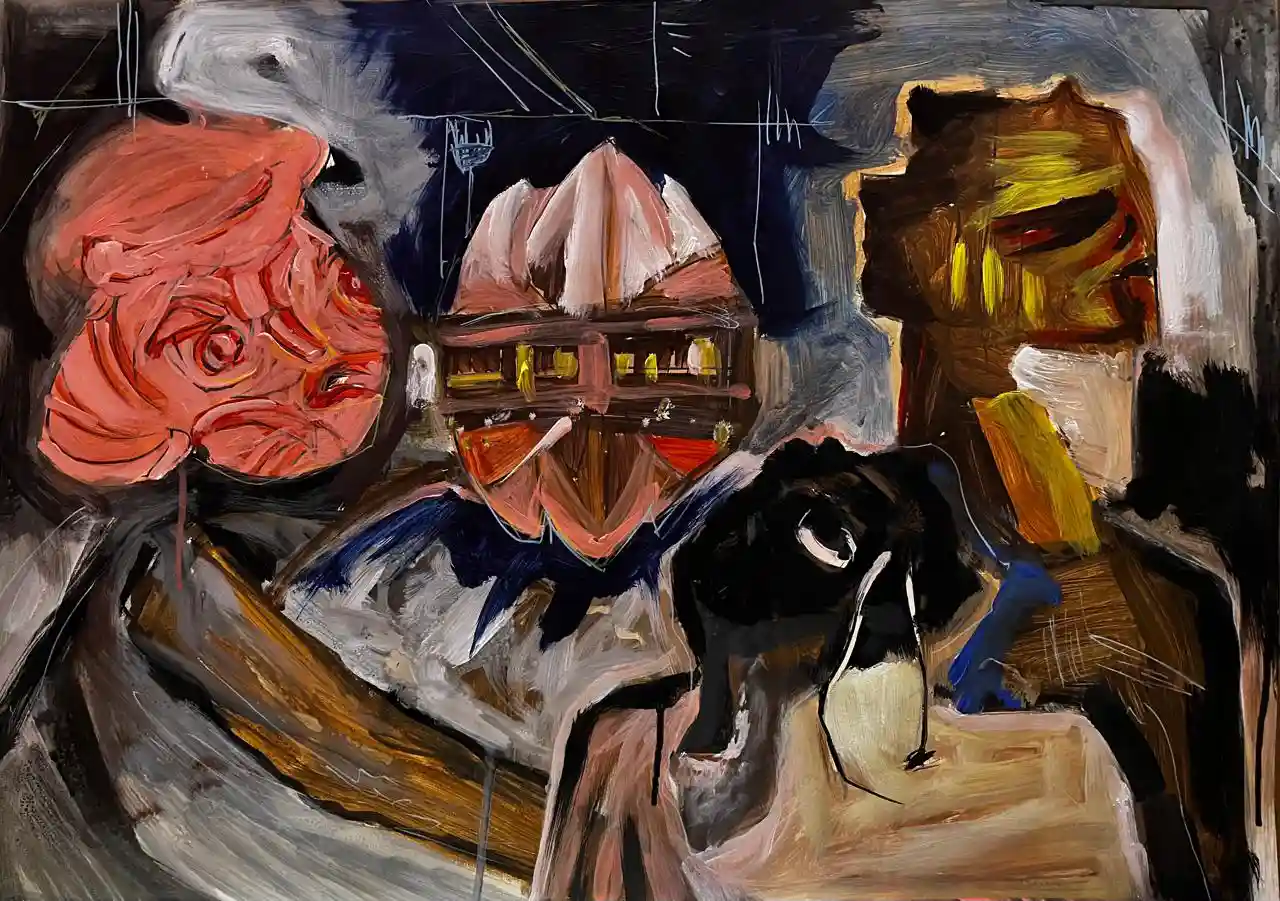
When I see a person, I see a DEAD person. I see raptors, machine and metals. There are millions of people, million faces, some are known, unknown, unseen, and with millions of expression, million structure.
But, this destructive REBELLION in art is from a horrible incident happened, and my FEARLESS expression comes out. Medium now matters the most for my expression.
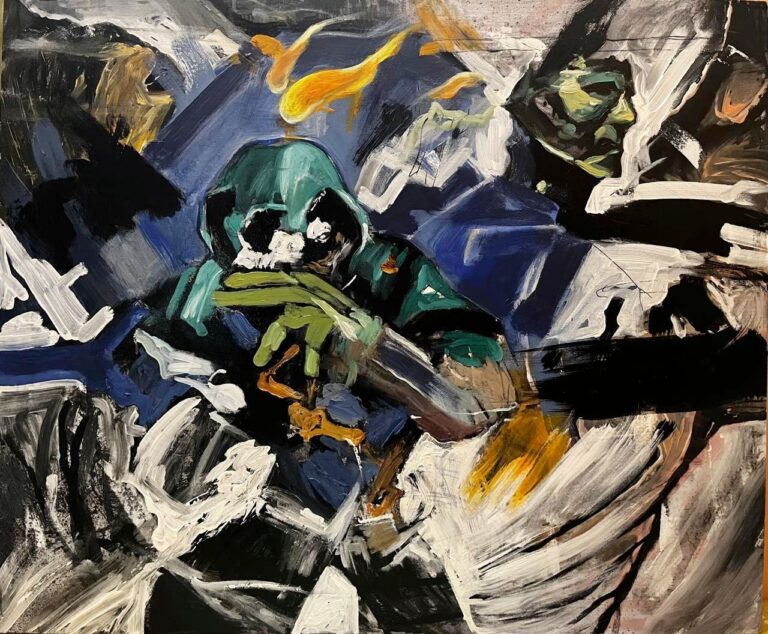
“Now, I see the raw energy behind it—the power, the intensity—something bold, loud, and fearless. Rebellion kept painting alive by bringing the focus back to the art itself, without all the extra rules. The rebel inside an artist won’t let creativity dry up with too much thinking—it pushes, breaks rules, and keeps art fresh and exciting.”
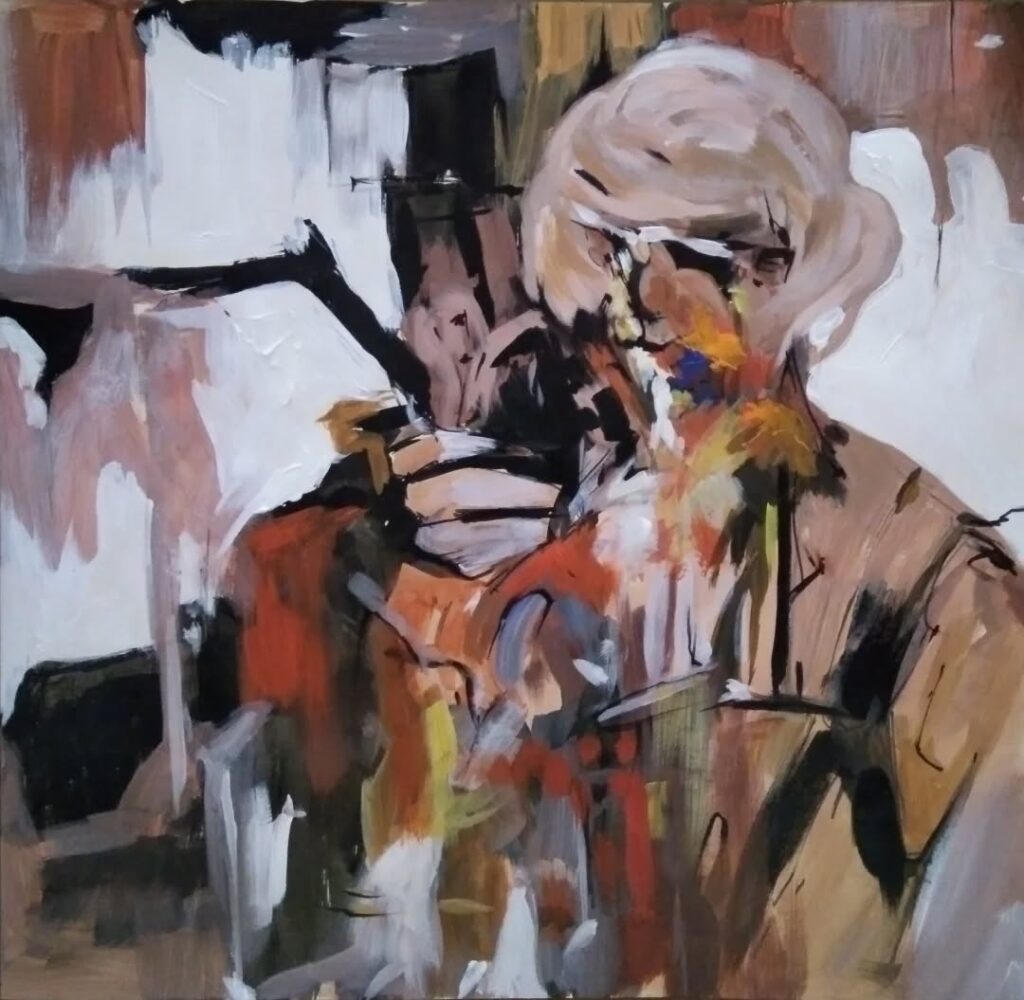

I sit amidst the swirling chaos, where the roadside meets the pub, and faces blur into symbols—abstract, unrecognizable, yet hauntingly familiar. The air is thick with the scent of liquor and lost souls, their masked emotions clashing like neon-lit billboards in the night. Glasses clink, hands grasp, but are we really here, or just fragmented versions of ourselves drowning in a drunken illusion? In this tangled mess of distorted figures and flickering memories, I wonder—who is watching whom?
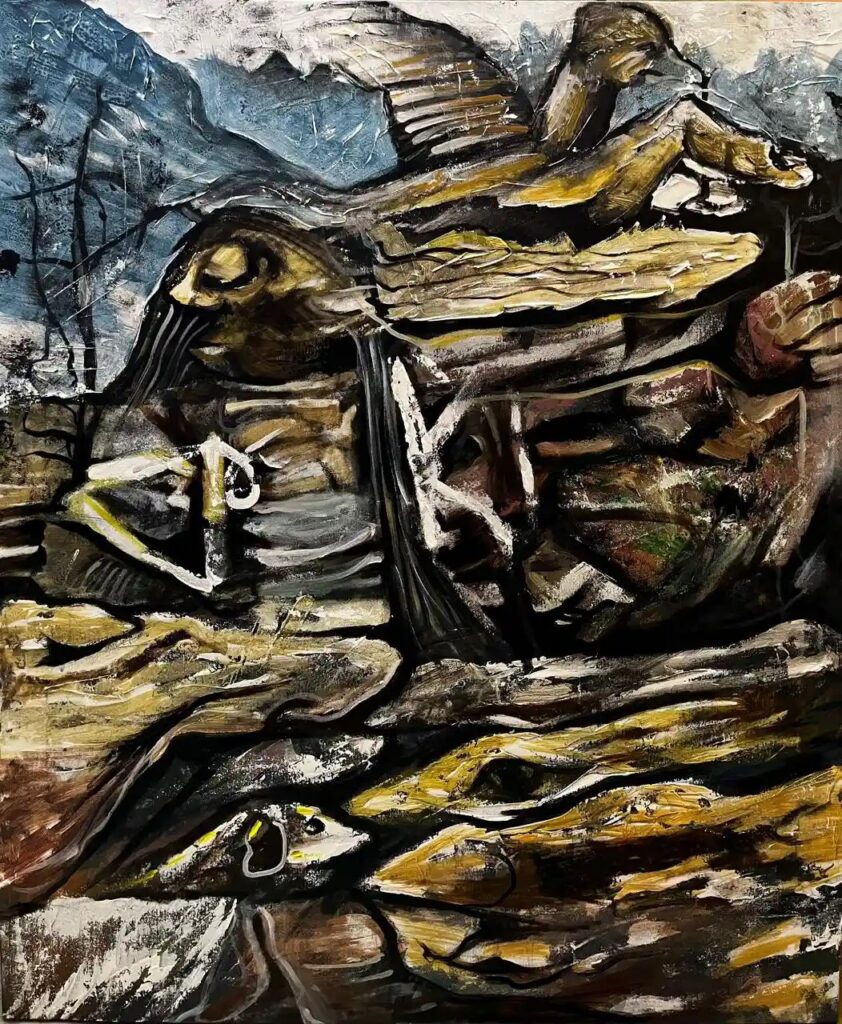
Turbulent Earth: Chaos Beneath the Layers
In this artwork, I’ve captured a chaotic, layered landscape filled with fragmented forms and rugged textures. Through the interplay of earthy tones and contrasting strokes, I wanted to express the turbulence and unrest beneath the surface. It reflects the raw, untamed energy of nature and conveys a sense of struggle, transformation, and the hidden stories within the land.


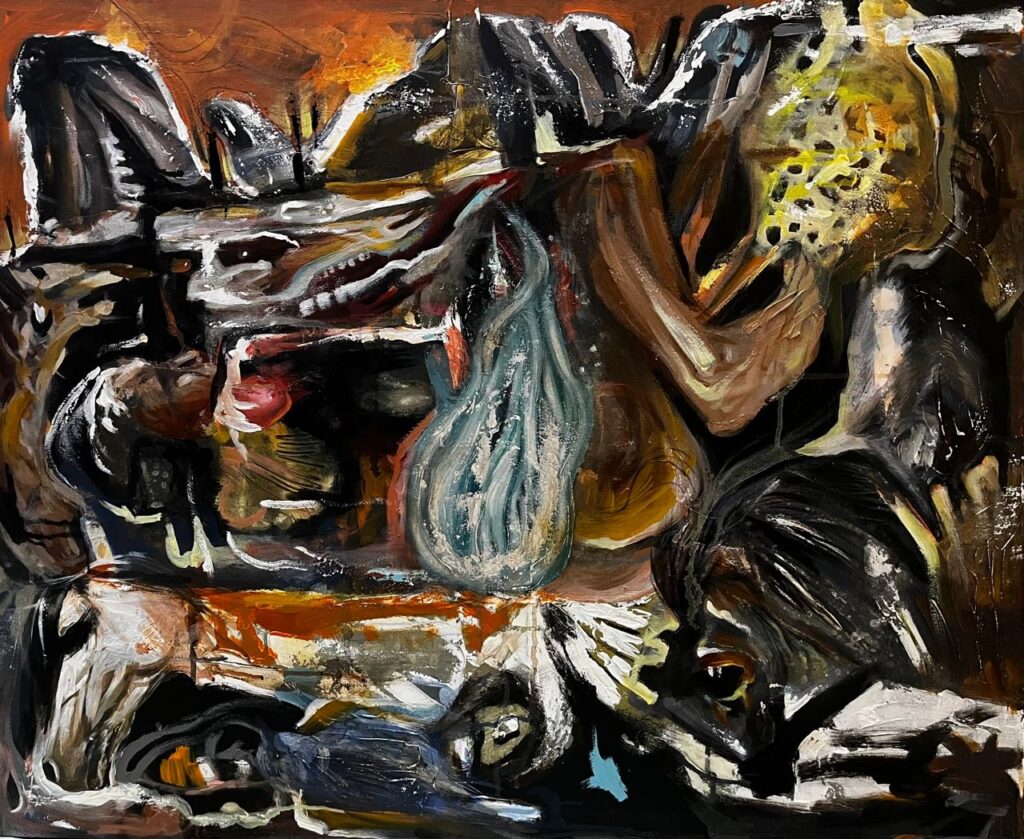
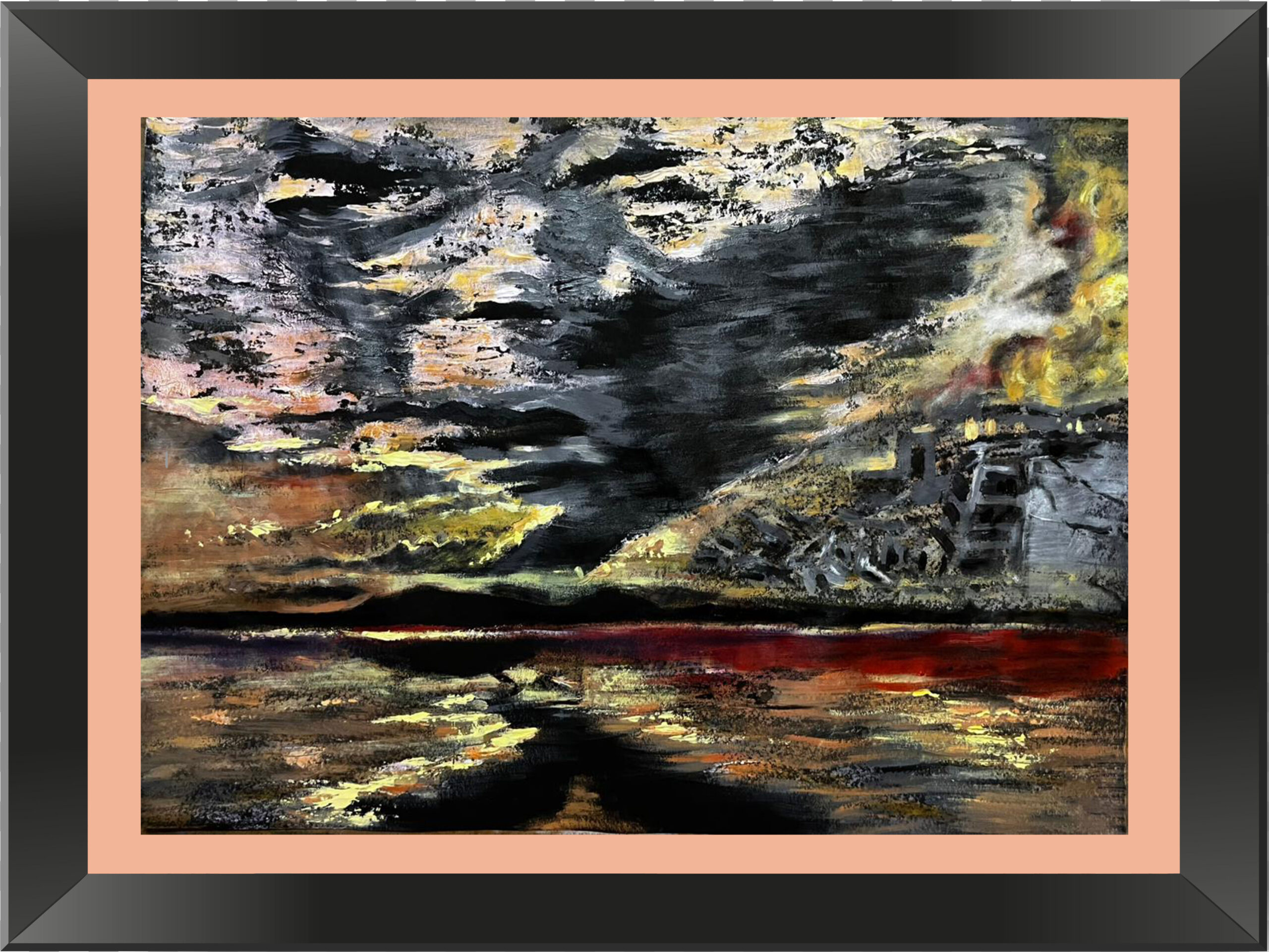
Nature, cruel and indifferent, offers no fair play. I see a stark division: on one side, the serene beauty of Dallake Lake, where the sky mirrors the fiery hues of conflict-ridden lands like Israel and Palestine. On the other, a haunting face, a symbol of all those who’ve suffered from war’s dark shadow. The lake’s waters seem divided, one side reflecting the tranquil peace of a saint, the other, the bloody results of war.
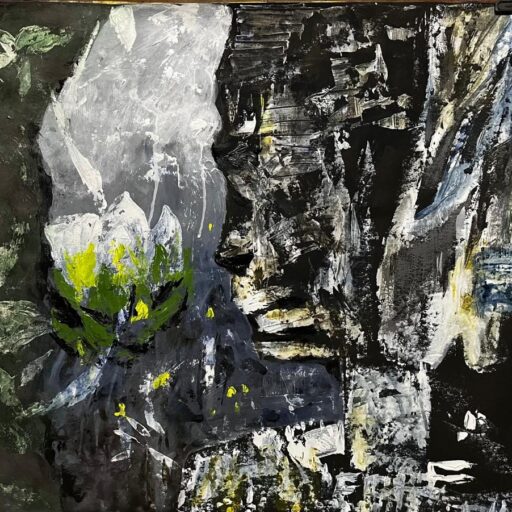
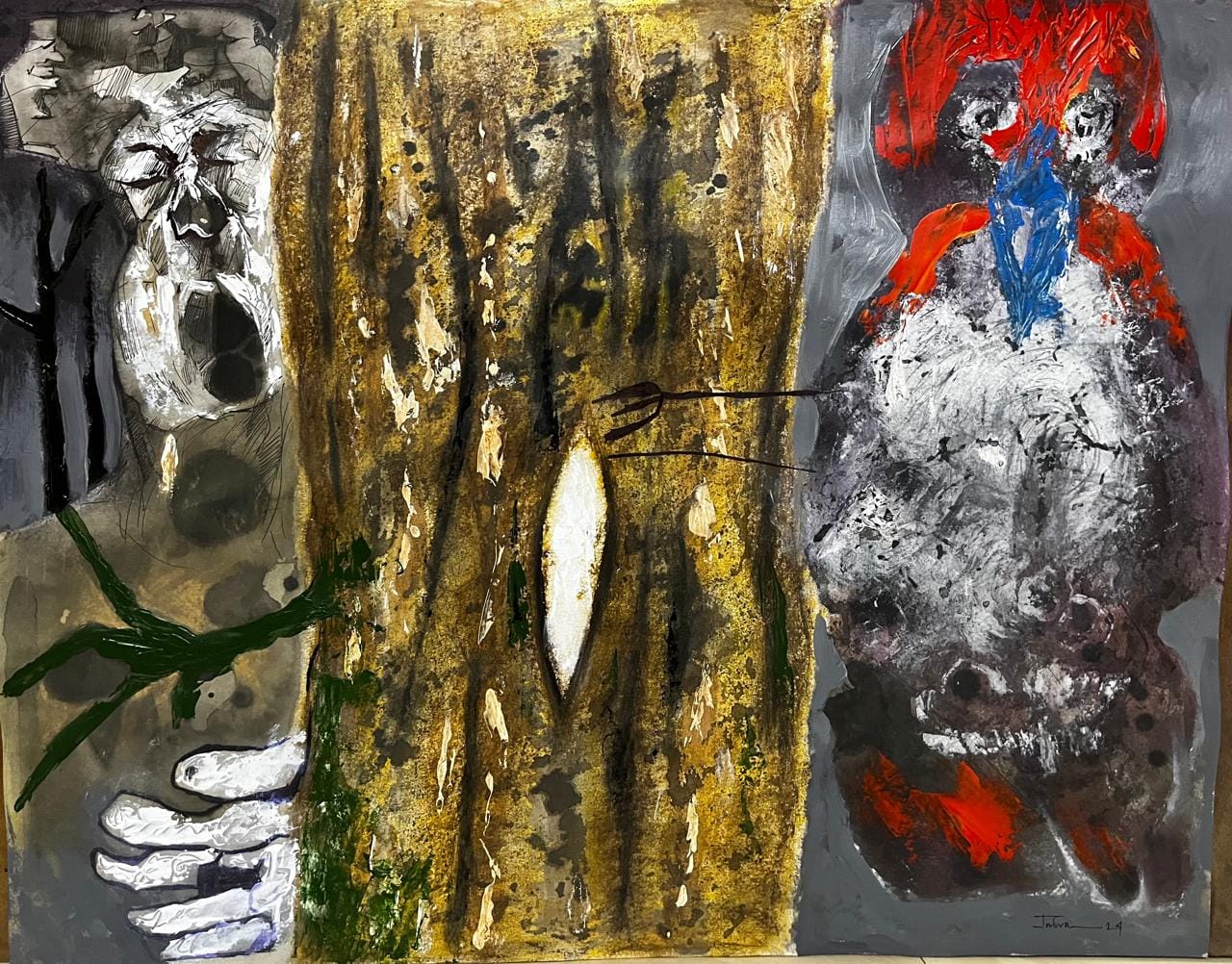
Indranil Banerjee’s artistic journey is deeply rooted in inspiration drawn from the modern paintings of Rabindranath Tagore. In his formative years, Indranil Banerjee artist began to explore the concept of texture in painting, developing a unique style influenced by the works of the celebrated Indian painters. For Indranil, texture is not just a visual element; it is the very structure of his art. He finds beauty in various types of textures, whether it’s broken or uneven, grayish textures found along roadsides, the roughness of walls, or the softness of foam.
This fascination with texture propelled him into a deeper artistic exploration. Indranil’s quest was to find recognizable forms within formless textures. This exploration is not merely a conscious effort; rather, it stems from a search that occurs within the subconscious mind. It reflects a journey that evolves internally, allowing his creativity to manifest in ways that may not be immediately apparent.
In this quest, every texture he encounters becomes an inspiration, leading him to uncover hidden shapes and forms. His work transcends traditional boundaries as he delves into the subconscious, allowing the textures to guide his artistic expression. This process reveals the intricate relationship between the seen and the unseen, where the texture serves as a bridge between the two.
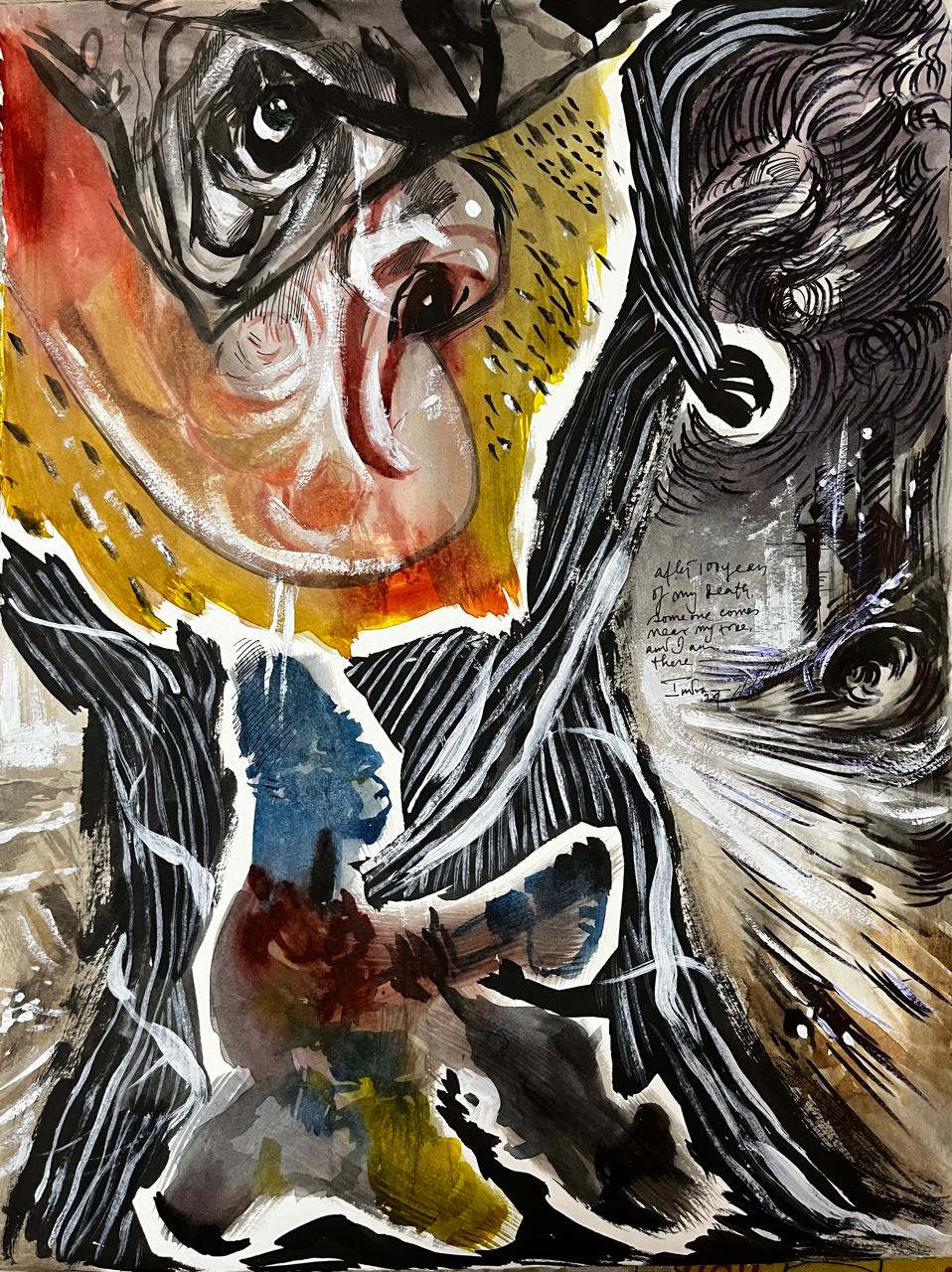
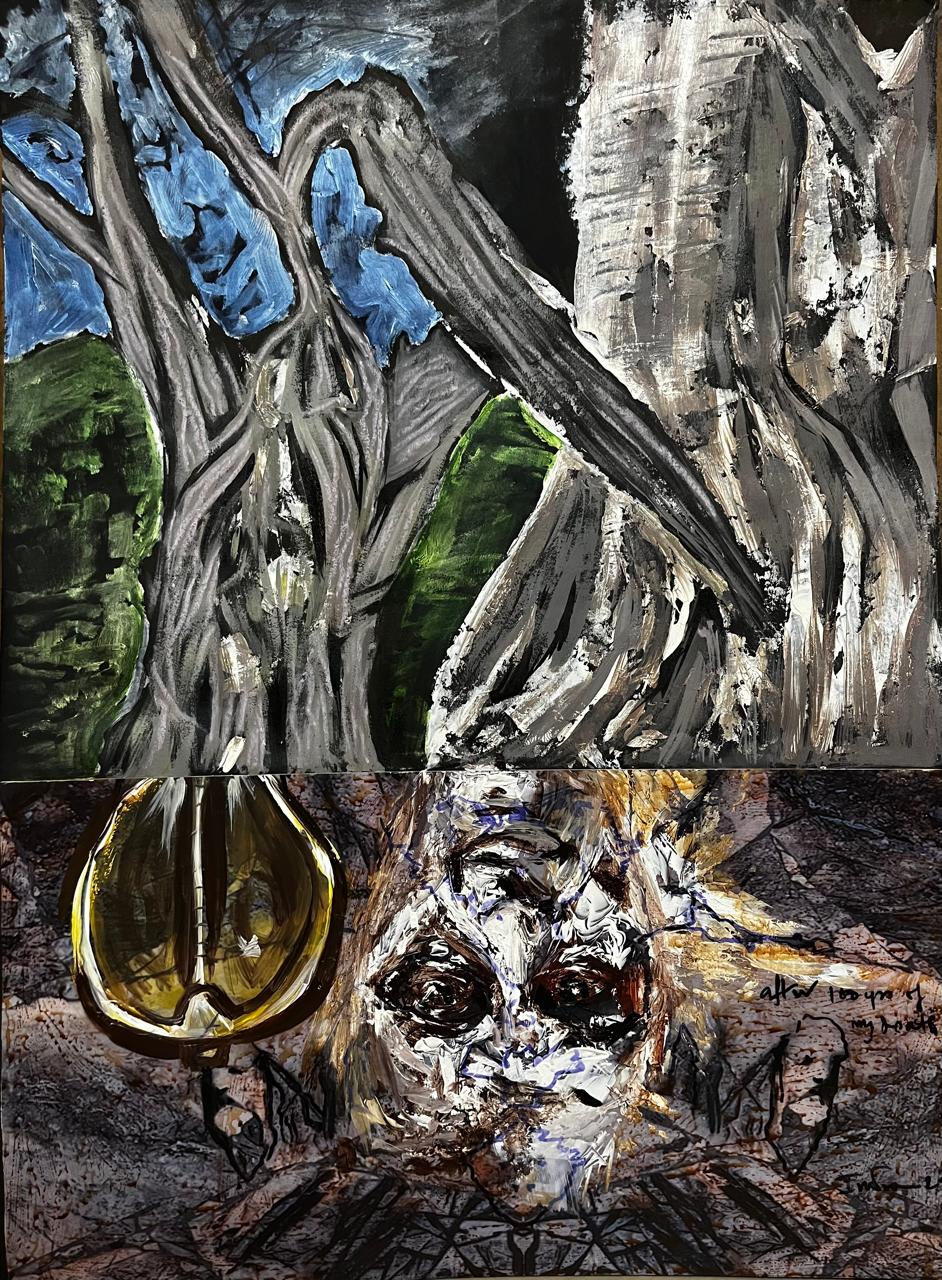
Indranil Banerjee’s earlier paintings focused primarily on the process of creation rather than the narrative conveyed on the canvas. For him, achieving the desired texture was of utmost importance, leading to an exploration of the subconscious mind. This journey into his inner self allowed him to create a variety of forms and textures, which he found immensely joyful.
Artist Indranil Banerjee emphasized a touch-based process, engaging with the materials through physical interaction. He explored different techniques involving pressure and movement, using his hands, fingers, and brushes to manipulate the paint. This tactile engagement with the medium allowed him to experience the act of creation deeply.
In his quest for new experiences, he began experimenting with various materials, such as mixing raw turpentine oil with acrylic paint. This process of experimentation was not merely about the final product; it was about the joy he derived from creating. Each stroke of the brush and each change in texture contributed to his evolving artistic expression.
As he continued to explore different techniques and materials, Banerjee’s work began to transform. From the initial focus on texture, his creations evolved into story-based paintings.
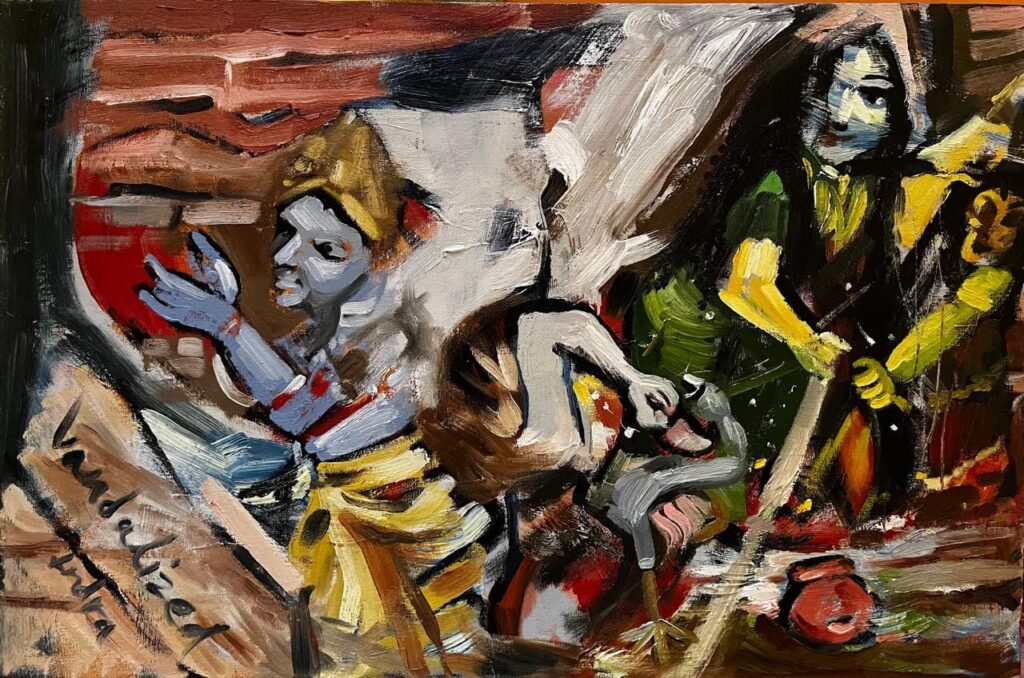
Indranil Banerjee Artist Says
Art has a unique power to evoke emotions, and I find that the things that touch me deeply—whether they bring joy, sadness, or even shock—serve as catalysts for my creative expression. These feelings compel me to translate them into my artwork, leading me on a journey of exploration and discovery. This process is gradual and often requires me to dive deep into my emotions and thoughts.
At the core of my artistic journey is the concept of abstraction. To me, abstraction is not merely a technique but a transformative process that allows me to move from recognizable forms to something more formless. This transition is crucial; it involves stripping away the unnecessary details and focusing on the essence of what I feel. In doing so, I aim to capture the true spirit of my emotions.
To achieve this formless state, I often turn to my subconscious mind, a realm where I feel most at home. It is here that my genuine thoughts and feelings reside, unfiltered and raw. By tapping into my subconscious, I can access a deeper understanding of my experiences and emotions. This journey inward is both enlightening and liberating, as it allows me to break free from conventional representations and express my inner world authentically.
Abstraction, for me, is about finding beauty in the chaos of emotions. It’s about allowing the colors, shapes, and forms to emerge from the depths of my psyche. This process transforms my feelings into visual elements that may not immediately resemble reality but convey the essence of what I want to express.
The things that emotionally move me serve as the foundation for my artistic expression. Through the process of abstraction, I delve into my subconscious, transforming recognizable forms into formlessness.
Works: 2011-2022
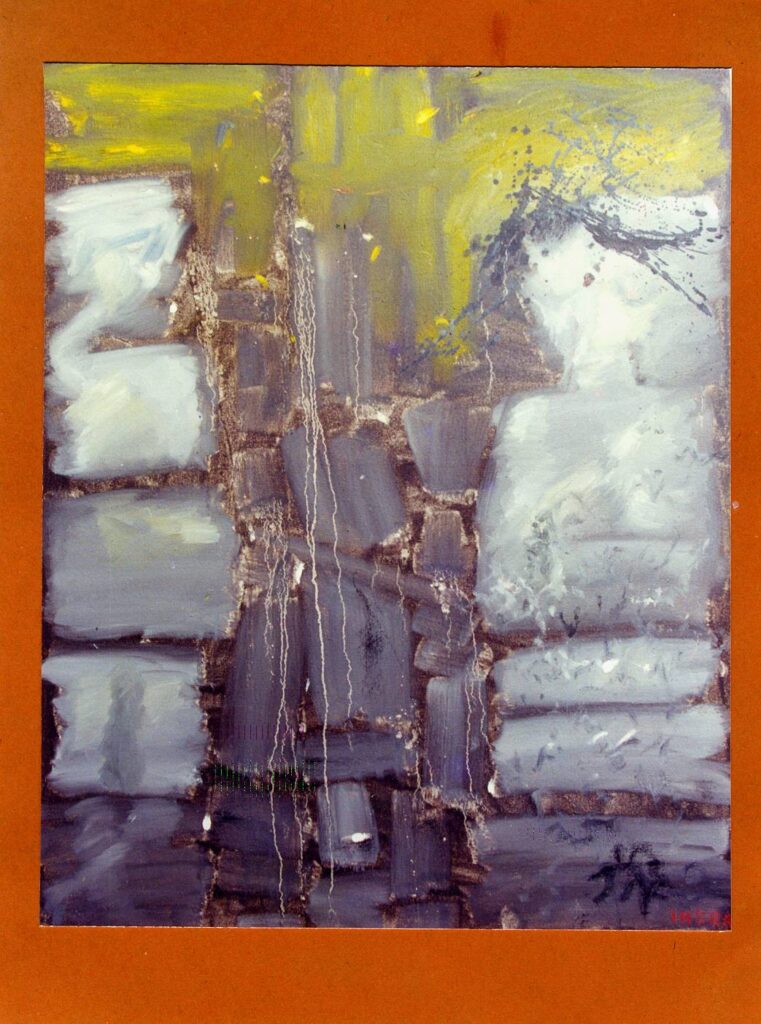
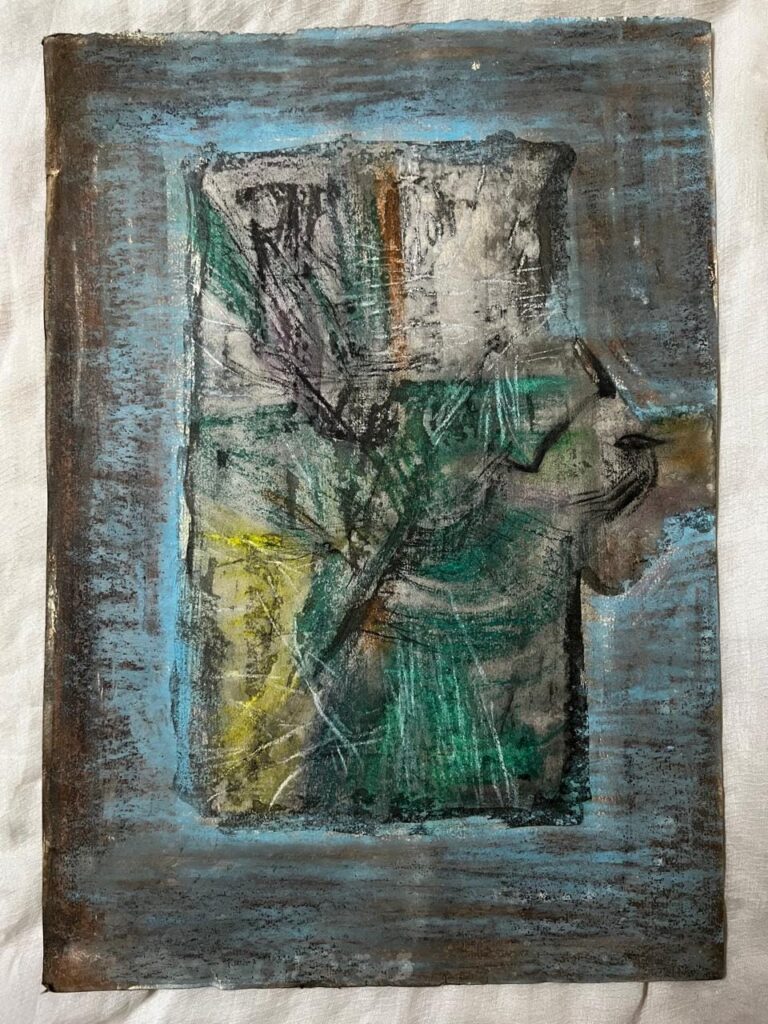
The Canvas as a Confidant to Artist Indranil Banerjee
To me, the canvas is not merely a surface but a living entity, a subject that patiently endures my emotional outbursts and listens intently to the whispers of my imagination. It is a vessel into which I pour my thoughts, feelings, and experiences, allowing them to flow freely onto the surface. The initial mark I make on the canvas sets the tone for the entire journey, leading me through a process of self-expression and catharsis.
If we imagine God as an idol, a form begins to take shape. We often envision that form similar to our human form. From there, we elevate God to a larger-than-life figure, tapping into our subconscious to create an abstract vision. This is why we depict God with multiple arms or exaggerated features—it’s our way of making the divine even more immense. That is the essence of abstraction.
Works: 2004-2010
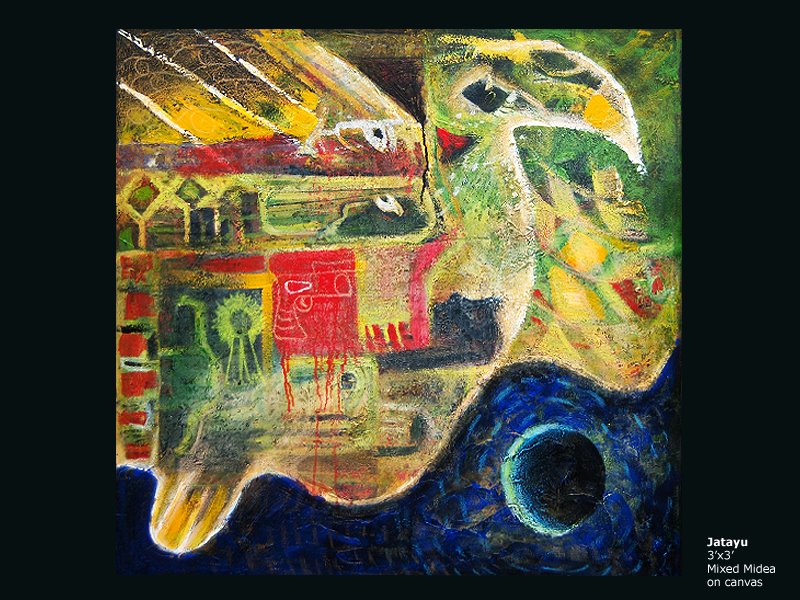
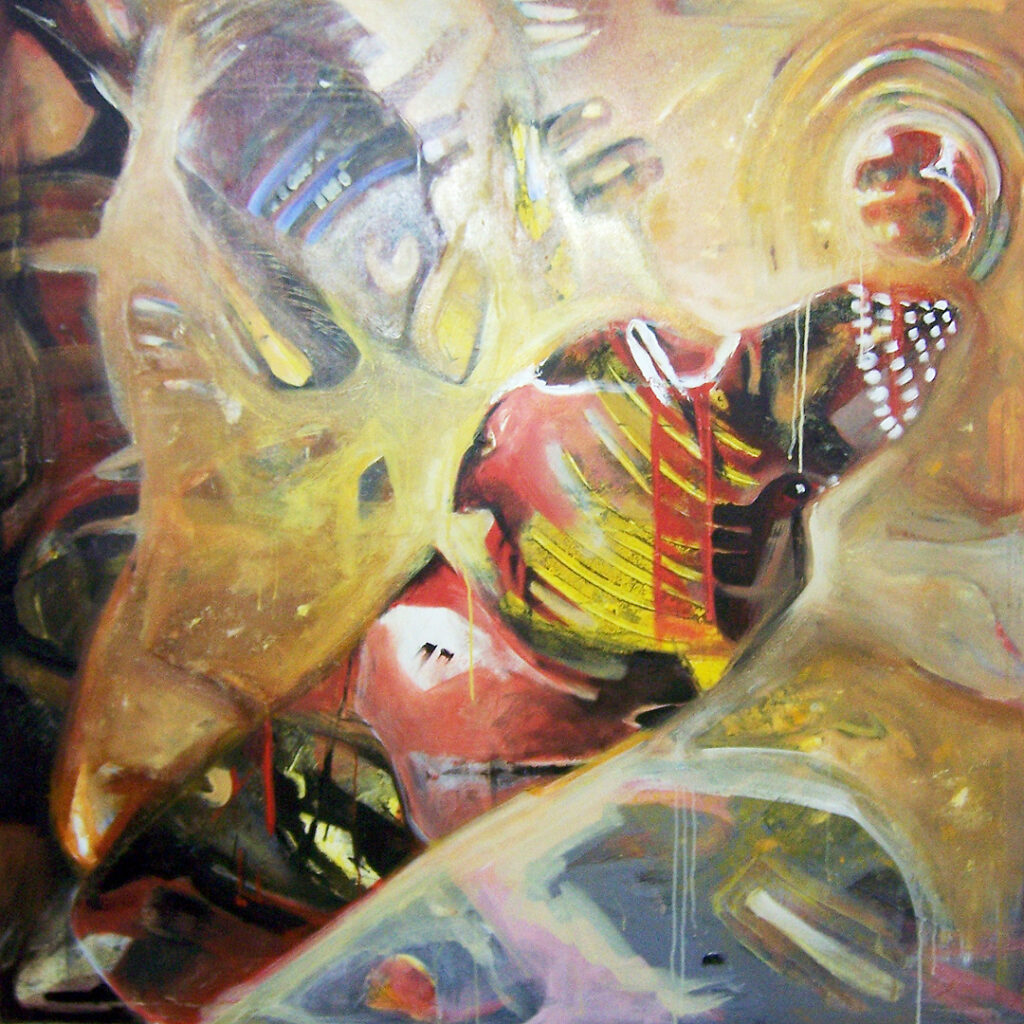
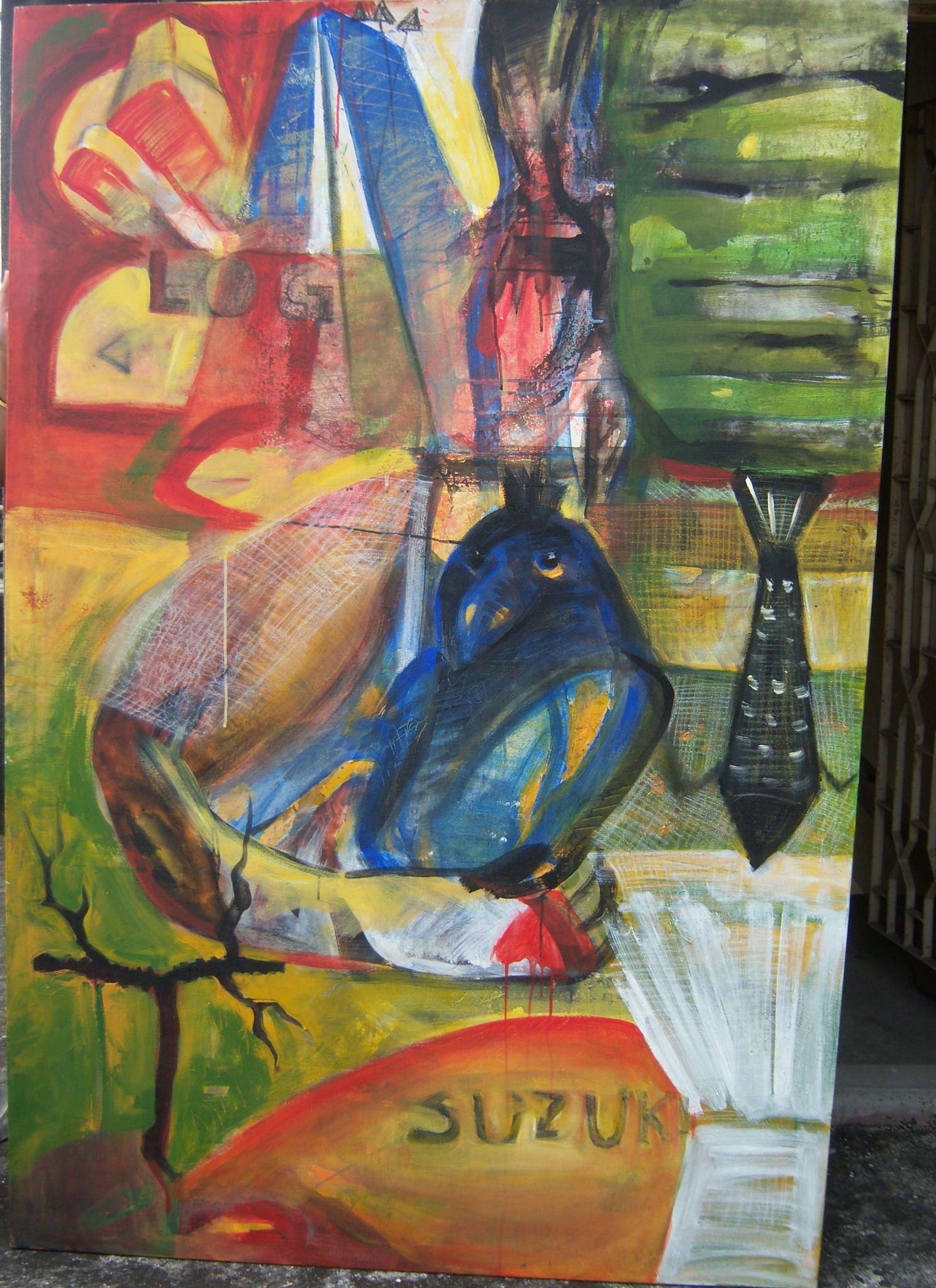
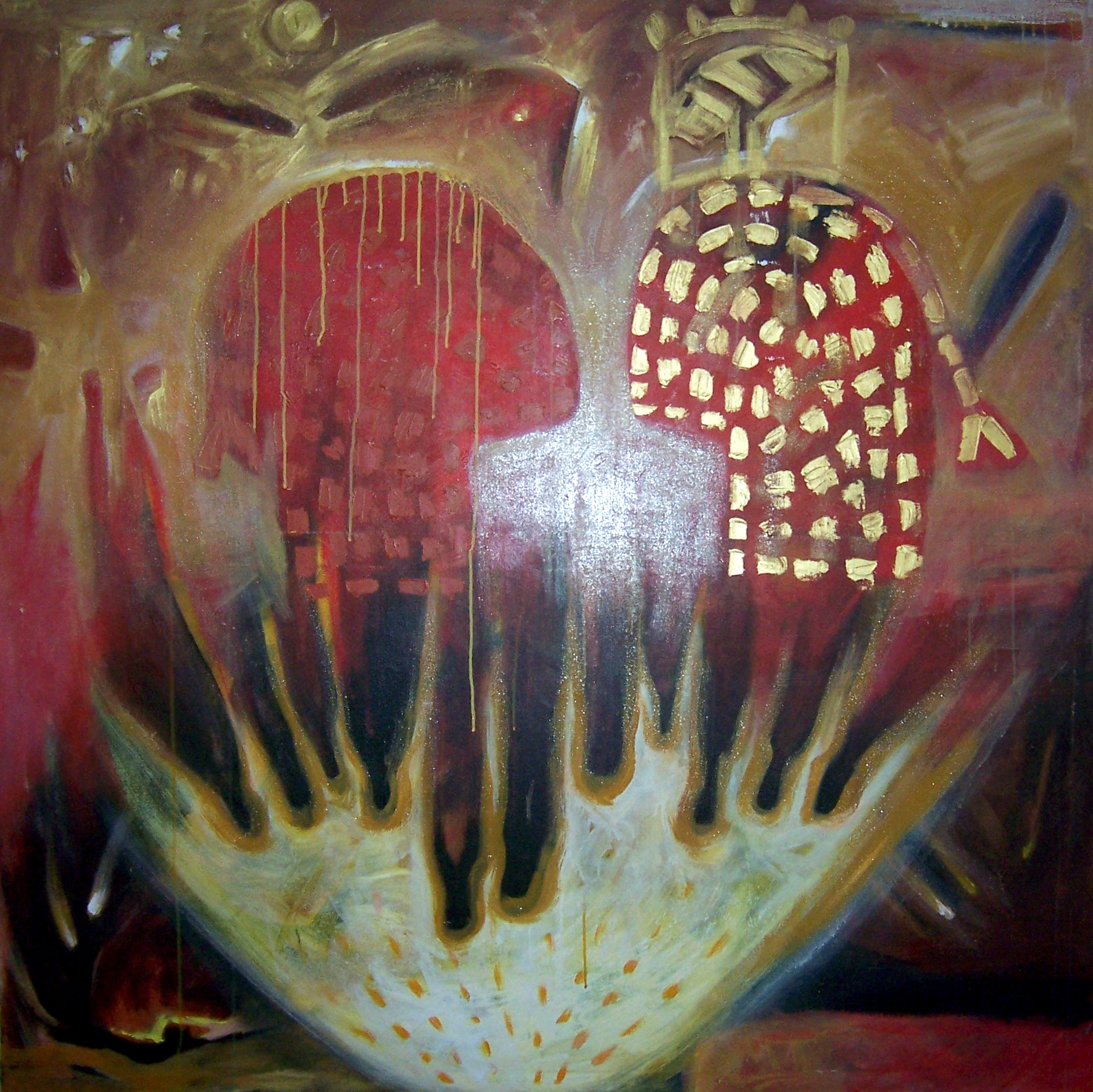
The craft of painting is deeply interconnected, meaning that the process of creating art often influences the final outcome. Sometimes, the subject itself takes on a life of its own and transforms into the artwork through its unique aesthetic qualities. This relationship between the process, and the subject allows for a dynamic flow of creativity, where the initial idea evolves into something unexpected and beautiful.
Works: 1998-2003
